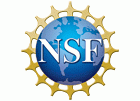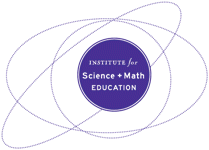Using 3D interim assessments to support coherence, equity, and a shared understanding of learning

Why it Matters to You
- Teachers, collaborating with colleagues, should use interim assessments to analyze the extent to which their instruction is supporting student learning.
- PD Providers should provide learning experiences for teachers focused on using a system of assessment that includes the use of interim assessments.
- School & District Leaders, in collaboration with teachers, should use interim assessments to improve instructional or curriculum choices based on data analyzed across classes, classrooms, and schools.
What Is The Issue?
A Framework for K–12 Science Education, NGSS writers, and assessment experts have put forth a vision focused on developing a “bottom up” system of assessments starting at the classroom level—when integrated into instructional units. This helps teachers make ongoing instructional adjustments, and it would promote vertically coherent assessments at school-, district-, and state-levels. Interim assessments—that fall between formative and summative—can be a valuable part of a more balanced and comprehensive 3D assessment system.
Authors:
By Todd Campbell, Jonathan Hall, Peter McLaren, Jeff Greig, Sean Elkins, John Duffy, Holly Hollander | January 2020
Reflection questions
- What shared model of learning guides curriculum, instruction, and interim assessments?
- Who will be involved in interim assessment teams?
- What is the purpose of your team’s work with interim assessments (e.g., supporting classroom instruction, providing insight into curriculum and learning across systems)?
Things To Consider
- Interim assessments are shared classroom assessments administered by groups of teachers in departments, schools, districts, or states. They can be used to collect evidence of students’ facility with science and engineering practices, crosscutting concepts, and disciplinary core ideas when explaining phenomena or solving problems. Like formative assessments, they provide information to individual teachers. However, unlike formative assessments, they can be meaningfully aggregated to provide information at broader levels.
- For teachers... interim assessments can: (1) generate meaningful student work that provides insight into whole- and small-group performance, as well as variability among individual students’ performance, (2) provide a measure to evaluate transfer from the learned context to a novel one, and (3) be presented in novel ways to provide a more contextual measure of the performance of students.
- For teachers and education leaders... interim assessments can: (1) inform decisions about equity and access as similarities and differences in learning are identified across classrooms, schools, and districts, (2) provide an anchor for professional learning focused on student work/artifacts, (3) help students orient to 3D assessments as a bridge to help them connect their daily learning with summative assessments, and (4) serve as an additional ‘link’ between formative and summative assessments to help promote vertical coherence.
- Interim assessments can be shared across districts to stretch scarce resources. Interim assessment results can be integrated with those from state assessments to provide richer profiles of student learning.
Attending to Equity
- Embedded assessment is instrumental to learning. Orchestrated assessments (e.g., tests, interim assessments) can detract from meaningful learning and should not be over-done.
- Assessments should value multiple modes of engagement and expression by giving students opportunities to engage in open-ended and extended tasks. This authentic approach is better aligned with how scientists work and can lower the anxiety associated with high-stakes assessments. Also, using fewer language-embedded items may assist emergent multilingual learners.
- Assessments should focus on relevant phenomena or problems to elicit explanations or solutions that are relatable to the intended audience and draw on student and community interests and expertise.
Recommended Actions You Can Take
- Know what you want to measure before you begin. Teams of teachers and local leaders should select assessment tasks based on the usefulness of the information they provide—not the topic or phenomenon featured.
- Decide on the scale at which you’d like to aggregate the results from interim assessments (e.g., across classes, schools, districts).
- Start by implementing existing interim assessment tasks from high-quality sources, as opposed to creating new ones. Here are good starting points that can be adapted into interim assessments: (a) Kentucky Through Course Tasks, (b) Next Generation Science Assessment, (c) SNAP Assessments, (d) Wisconsin Performance Tasks.
- Deliberate on the outcomes that emerge from interim assessments and decide what they tell the team about student learning. Discuss and take action to improve learning based on these outcomes/artifacts.
ALSO SEE STEM TEACHING TOOLS
STEM Teaching Tools content copyright 2014-22 UW Institute for Science + Math Education. All rights reserved.
This site is primarily funded by the National Science Foundation (NSF) through Award #1920249 (previously through Awards #1238253 and #1854059). Opinions expressed are not those of any funding agency.
Work is licensed under a Creative Commons Attribution-ShareAlike 4.0 Unported License. Others may adapt with attribution. Funded by the National Science Foundation (NSF). Opinions expressed are not those of any funding agency.


 Email Feedback
Email Feedback


